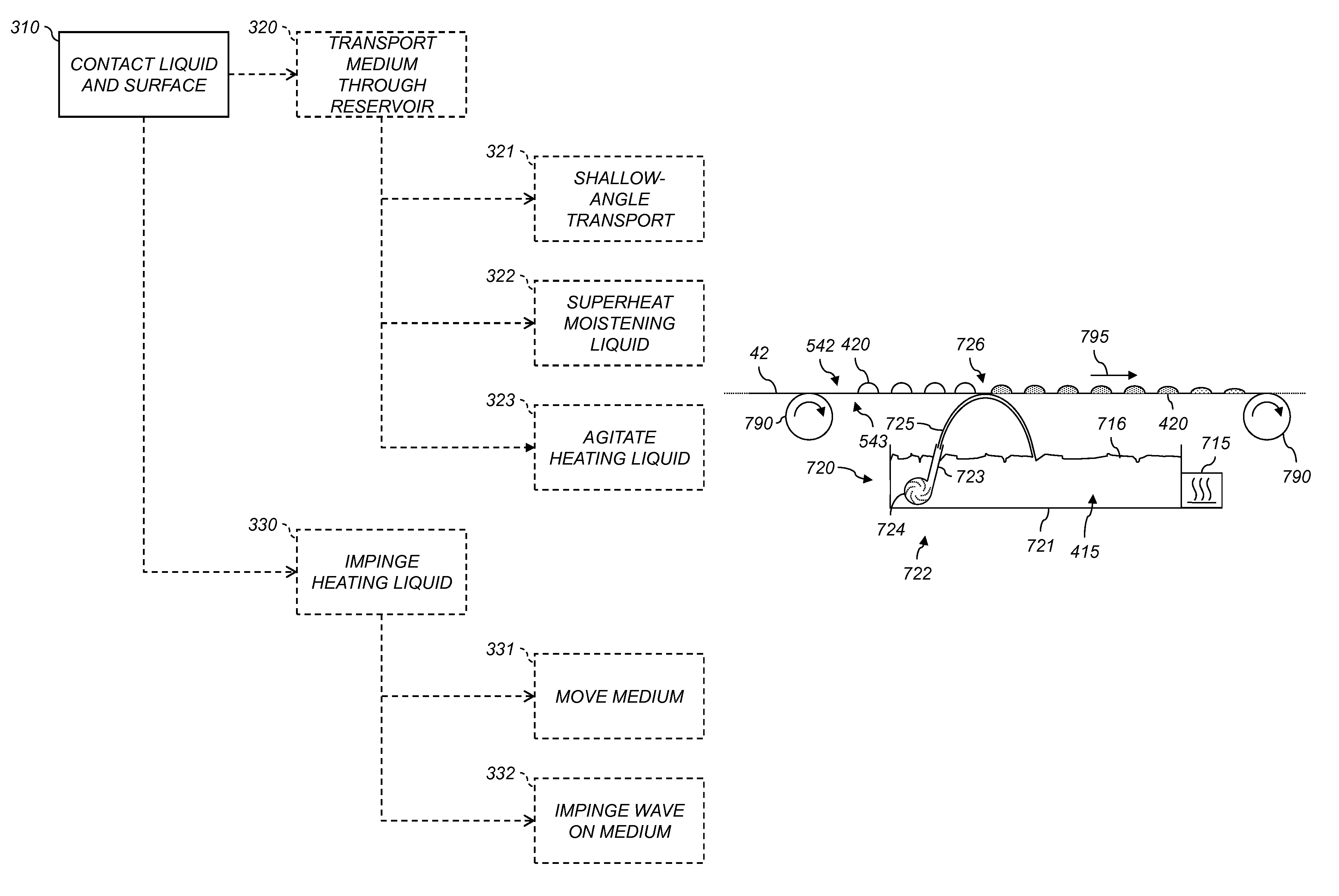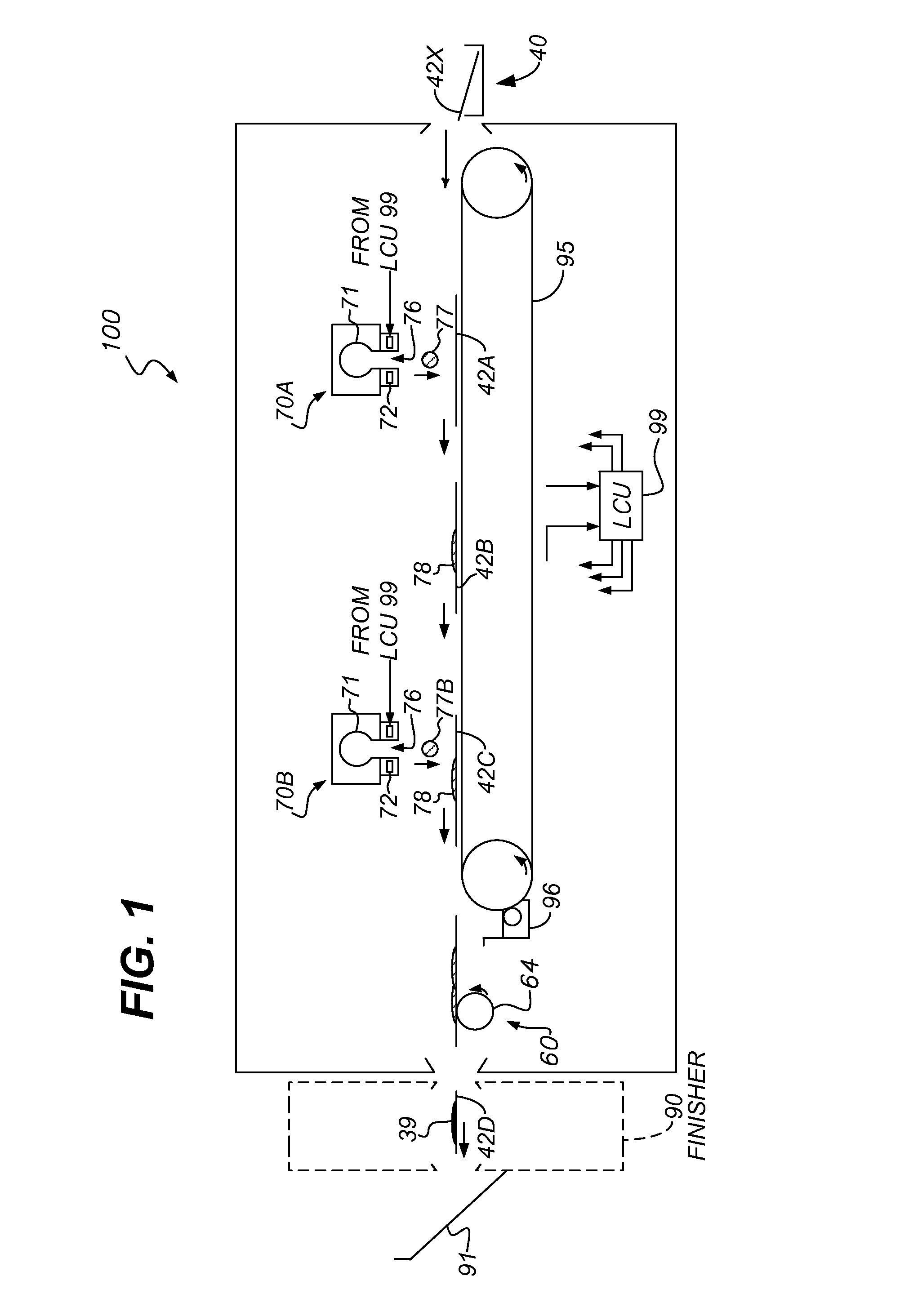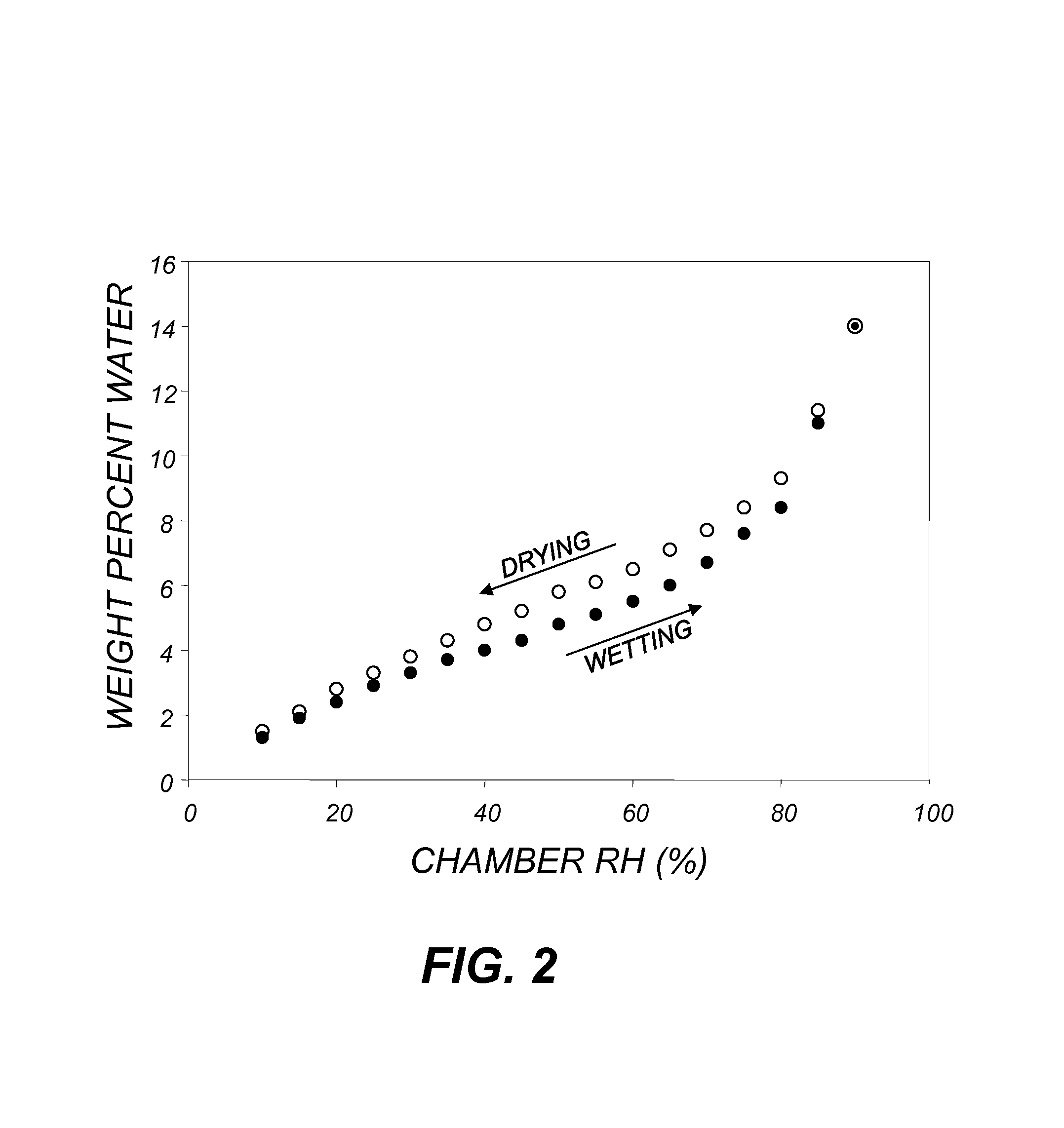Removing moistening liquid using heating-liquid barrier
a technology of moistening liquid and heating liquid, which is applied in the field of media drying, can solve the problems of reducing effective resolution, reducing image quality, and reducing the strength of the receiving device, and achieves the effects of effective removal of moistening liquid, reducing image damage probability, and increasing thermal power
- Summary
- Abstract
- Description
- Claims
- Application Information
AI Technical Summary
Benefits of technology
Problems solved by technology
Method used
Image
Examples
Embodiment Construction
[0026]U.S. Pat. No. 8,251,505 to Hara, entitled “Recording apparatus and method of adjusting temperature of transport belt of recording apparatus,” describes a transport belt that carries a target (e.g., a receiver). The belt is heated to accelerate drying liquid off the target. However, air gaps or bubbles can be present between the receiver and the transport belt. These can be microscopic air bubbles due to the roughness of the receiver or the belt. These bubbles act as insulators, reducing the rate of thermal transfer from the belt to the receiver. Therefore, there is still a need for improved ways of removing moisture from receivers.
[0027]Inkjet printing processes can be embodied in devices including printers, copiers, scanners, and facsimiles, and analog or digital devices, all of which are referred to herein as “printers.” A digital reproduction printing system (“printer”) typically includes a digital front-end processor (DFE), a print engine (also referred to in the art as a ...
PUM
 Login to View More
Login to View More Abstract
Description
Claims
Application Information
 Login to View More
Login to View More - R&D
- Intellectual Property
- Life Sciences
- Materials
- Tech Scout
- Unparalleled Data Quality
- Higher Quality Content
- 60% Fewer Hallucinations
Browse by: Latest US Patents, China's latest patents, Technical Efficacy Thesaurus, Application Domain, Technology Topic, Popular Technical Reports.
© 2025 PatSnap. All rights reserved.Legal|Privacy policy|Modern Slavery Act Transparency Statement|Sitemap|About US| Contact US: help@patsnap.com



